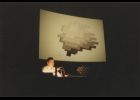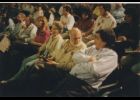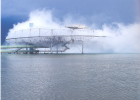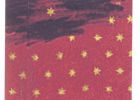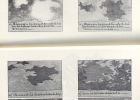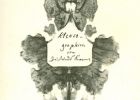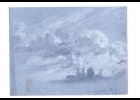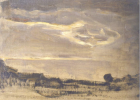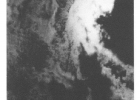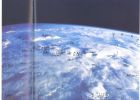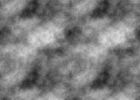Rainer Guldin
Rainer Guldin (Ph.D.) was Adjunct professor of German language and Culture (2003-2022) at the Faculty of Communication Sciences of the Università della Svizzera italiana in Lugano (Switzerland). He studied English and German Literature in Zurich and Birmingham (Great Britain). His diploma was dedicated to the American writer H. P. Lovecraft, and his Ph.D. thesis focused on the work of the German writer Hubert Fichte. He taught courses and held seminars at the Universidade do Estado do Rio de Janeiro (UERJ) in Brazil (2001), the Bauhaus Universität in Weimar (Germany) (2003), and the Centre for Translation and Intercultural Studies of the University of Manchester (England) (2013). He was also visiting professor (Cathedra IEAT/Fundep) at the Universidade Federal de Minas Gerais in Belo Horizonte (UFMG) Brazil (2012). In 2013 and 2015, he taught a master’s course on multilingual literature at the University of St. Gallen (HSG) (Switzerland). Publications: Philosophie des Windes. Versuch über das Unberechenbare, Bielefeld, 2023; Vilém Flusser – Hundert Zitate (together with Andreas Müller-Pohle), Berlin 2020; Metaphors of Multilingualism. Changing Attitudes towards Language Diversity in Literature, Linguistics and Philosophy, Routledge, New York, 2020; O homem sem chão: a biografia de Vilém Flusser, Annablume, Sāo Paulo (2017); and Vilém Flusser (1920-1991). Ein Leben in der Bodenlosigkeit. Biographie, transcript, Bielefeld 2017 (together with Gustavo Bernardo); Translation as Metaphor, Routledge, New York 2016 and 22018; Politische Landschaften. Zum Verhältnis von Raum und nationaler Identität, transcript, Bielefeld 2014; Spiegelgeschichten. Zu Hubert Fichtes und Hans Henny Jahnns Thomas Chatterton, Rimbaud Verlag, Aachen 2010; Wolkenformationen […] aus dem Dunst der Möglichkeiten. Zur nubigenen Einbildungskraft, Walther König, Cologne 2009; Vilém Flusser (together with Anke Finger and Gustavo Bernardo), W. Fink UTB, Paderborn 2009; Die Sprache des Himmels. Eine Geschichte der Wolken, Kadmos, Berlin 2006; Philosophieren zwischen den Sprachen. Vilém Flussers Werk, Wilhelm Fink, Munich 2005.
Articles of Rainer Guldin
, ( ) , On Vilém Flusser’s Idiosyncratic Use of Commas and Round Brackets
This essay explores a dimension of Vilém Flusser’s writing and thinking that has not received any attention so far: his idiosyncratic use of punctuation. Punctuation marks are more than just a way of structuring sentences. They can also be seen as gestures, as embodiments of specific mental attitudes. In this sense, Flusser’s frequent combination of round brackets included within commas articulates a fundamental tension in his thinking. These punctuation clusters are the very site where two contrary tendencies of his thinking meet and collide: the constant creative push forward and the continuous flow of the ongoing reflection, on the one hand, and the persistent urge to stray off from the main path through frequent associative eruptions on the other. It is the conflict between circles and lines, between the sprawl of tangential offshoots and the continuous attempt to impose linearity by chopping off the outgrowths, the tension between losing oneself in writing and the wish to keep in control. As Flusser calls it in “The Gesture of Writing”, it is the tenacious struggle between the ramifications of the ‛branching thought tree’ and the formal compulsion of the ‛Mesopotamian brick’. The essay also contains a detailed analysis of Flusser’s “The Gesture of Writing”, “Le geste d’écrire” and “O gesto de escrever” that shows how the use of this specific punctuation cluster evolves in the process of self-translation.
A Forgotten Publication Project: Vilém Flusser’s “The Fairy Tale of Truth”
In the 1990s, the Bollmann Verlag planned to publish a complete edition of Vilém Flusser’s oeuvre. However, in the mid-nineties, due to financial difficulties, this plan had to be abandoned. In 1996, was published the last volume under the catchy title Kommunikologie. However, the material for another complete volume had already been assembled by Edith Flusser, Klaus Sander and Vera Schwamborn. The working title was Das Märchen von der Wahrheit. Glossen und Philosophiefiktionen (The Fairy Tale of Truth: Glosses and Philosophical Fictions). The first section contained a collection of twenty-seven philosophical fictions and the second nearly all the texts of the daily satirical column Posto Zero that were published from January 22 to April 12, 1972, shortly before Flusser’s return to Europe. For the publication project, Edith Flusser had translated practically all the Portuguese texts into German. The essay also discusses five of these previously unpublished texts in more detail.
Figures of Nihilism in Vilém Flusser’s Philosophy
This essay focuses on the role of nihilism in the development of Vilém Flusser’s work, a notion that plays a major role at the beginning of his intellectual adventure and keeps resurfacing in various guises and different moments. Nihilism is linked to certain people and the work of certain philosophers: to his friend Alex Bloch and the work of Albert Camus, Friedrich Nietzsche, and Vicente Fereira da Silva. It appears in The History of the Devil, the autobiography Bodenlos and Vampyroteuthis Infernalis. Nihilism is connected to a series of topics: the forces of negativity and denial, the absurdity and groundlessness of human existence, the meaninglessness of life and the temptation of suicide, the concept of nothingness in Jewish thinking and the void in Oriental philosophy, the devil and the diabolical abyss, Mephistopheles and the infernal octopus at the bottom of the sea, and finally the zero-dimensionality of pixels and the principle of entropy. Flusser repeatedly spoke of himself in Mephistophelian terms and called his life in Brazil a diabolical existence. Samson Flexor painted a portrait of Vilém Flusser that strongly accentuated the diabolical side of his person. Louis Bec’s various species of Vampyroteuthis Infernalis represent different sides of Flusser’s thinking.
A Modest Proposal for the Saponification of Fats: On the Role of Satire in Vilém Flusser’s Work
The starting point of this essay is an interview with Andreas Müller-Pohle and Volker Rapsch (August 1988), in which Flusser defined his writing style as satirical and Vampyroteuthis infernalis as a satirical text. In the interview, Flusser also speaks of academic seriousness as a role to be played, questioning simple notions of authorial objectivity. Flusser’s comment has far reaching consequences for the interpretation of his other writings and raises a series of questions: Was he trying to influence the reception of his new book Angenommen that would be published only one year later, or did he want to reorient the way his books were being read in Germany at the time? Is there an ironical, fabulatory undertone in all his writings even those considered to be straightforward comments on communication and media theory? The first part of the essay discusses some elements of Flusser’s use of satire and compares his short satirical text “Verseifung” (Saponification) with Jonathan Swift’s “Modest Proposal”. The second part deals with Flusser’s satirical use of animal characters (ants, unicorns, the taenia solium, and the imaginary hybrid creature Bibliophagus convictus) in his philosophical fables and their relationship to the Vampyroteuthis infernalis.
Colorarium: The Exchange of Letters between Vilém Flusser, Karl Gerstner, Philippe Henry and Gottfried Jäger
This essay is about the relationship and collaboration between Vilém Flusser, Karl Gerstner, Philippe Henry, and Gottfried Jäger and the way this impacted the project of the House of Colour in São Paulo between 1987 and 1989. In this period, Flusser exchanged numerous letters and texts with his three correspondents, continuously re-elaborating and expanding his ideas about colour and their specific role in the project. This communication process was naturally enough multilingual. Flusser used English, German and Portuguese interspersed with French. Jäger wrote his texts in German, Gerstner in German and English, and Henry used Portuguese and French. The plurality of idioms is echoed in the use of different media. Besides forms of written communication (letters, essays, telegrams), video interviews were done in Robion, which were viewed and commented upon in Brazil. Henry conveyed the questions by phone and Flusser reacted in written form. Gerstner and Flusser wrote several texts together. Flusser travelled three times to Brazil, visited Gerstner in Basel and Hippoltskirch and Jäger in Bielefeld. Both Gerstner and Jäger came to see him in Robion. Henry travelled several times to Robion, and also met Gerstner and Jäger. All this ensured a constant flow of back-and-forth information within the small network of friends.
Coloured technical images: On the Role of Colour in Vilém Flusser’s Work
Flusser wrote about colour from different points of view His interdisciplinary approach defies clear-cut borders by contaminating that which is generally thought to be separated. It rather seeks to create complex syntheses that play a privileged role in his texts on colour. In the same way, colours do not stick to the forms into which one tries to imprison them. They overflow, blend and bleed into each other. This essay focuses on four aspects of colour: the connection of black and white in photography and discourses on “racial” differences; the role of greyness and its relationship to colour luminosity in the description of culture and politics; the presence of colour in nature, landscape, and the animal world; Flusser’s use of colour in a redefinition of the notion of technical images in the context of the project of the Casa da Cor.
Thinking Plurality. Vilém Flusser and Michel Serres: A philosophical convergence
This essay compares Vilém Flusser’s and Michel Serres’s notion of plurality. Flusser’s and Serres’s writing and thinking are strikingly similar even if they radically diverge on some points. For both philosophers, thinking is not a linear progression that moves straight ahead along a simple line, but a journey full of meandering and surprising twists and turns, which can lead back on its tracks. To describe this complex contradictory movement, Flusser uses the spatial metaphors of the circle and the spiral. This is best exemplified in his practice of multiple translations and retranslations, and the Jewish method of Pilpul. Serres, on the other hand, uses the metaphors of the randonnée – a random stroll across a landscape –, the wild flight of a wasp and the unfolding and refolding of a plane of dough. Both authors reject a view of reality based on a single centralized point of view, an umbilical vision of the world, as Serres called it. They both question systematic thinking and favor theoretical plurality and openness. In Flusser’s view, synthesis brings points of view together that often radically differ from each other. For Serres synthesis is a cluster of differentiated but organized relations. Flusser’s and Serres´s thinking is non-linear, non-hierarchical and always open-ended, a proliferation of fixed points to infinity. For both thinkers these different points of view are equally valid.
„Eine Wolke von Zukunft“. Zur nubigenen Einbildungskraft in Vilém Flussers Werk
This essay starts out from Flusser’s use of the metaphor of the cloud as a possible representation of our present condition. Our identity and the world around us have lost all solidity and turned into groundless swarms of particles. This vision accompanies the short history of the cloud that follows, moving from its conception as a changeable veil masking the true light of inner truth, to an assemblage with frayed and constantly changing outlines, a formless but significant stain, and a field of possibility. As Flusser points out, when dealing with present day digital technology, one has the impression that our imagination (Einbildungskraft) has emigrated from our brains and become independent so that one can have a look at one’s own dreams. One would have to enter into a kind of dialogue (Zwiegespräch) between our own imagination and the one that we have been feeding into the computer, in order to pave the way for a jump into a completely new form of Einbildungskraft.

